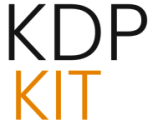Self-Publishing in Architecture: A Transformative Force in Architectural Communication
I. Introduction: The Rise of Self-Publishing in Architecture
A. The Changing Landscape of Architecture Publishing
1. Publishers Cut Back on Architecture Titles: In recent years, traditional architecture publishing houses have faced financial challenges, leading to a decline in the number of architecture titles published. This has created a void that self-publishing is increasingly filling.
2. Technologies Facilitate Self-Publishing: Advances in digital technology and online platforms have made self-publishing more accessible and affordable for architects, enabling them to bypass traditional publishing routes and directly reach their target audience.
B. Advantages of Self-Publishing for Architects
1. Flexibility in Content, Design, Schedule, and Distribution: Self-publishing empowers architects with complete control over every aspect of their book, from content and design to scheduling and distribution, allowing them to tailor their publication to their specific vision and goals.
2. Cost-Effectiveness for Smaller Firms: Self-publishing can be a cost-effective option for smaller architecture firms that may not have the resources to secure a traditional publishing deal or for projects that might not be commercially viable for traditional publishers.
3. Targeting Niche Audiences: Self-publishing allows architects to target niche audiences more effectively, as they can tailor their content to specific interests or demographics that traditional publishers might overlook.
4. Showcasing Unique Perspectives and Design Philosophies: Self-publishing provides a platform for architects to share their unique perspectives, design philosophies, and innovative approaches, contributing to the broader discourse on architecture and design.
C. Drawbacks of Self-Publishing
1. Limited Reach Compared to Traditional Publishing: Self-published books may have a limited reach compared to books published by established publishing houses, which have extensive distribution networks and established relationships with bookstores and libraries.
2. Potential for Lower Production Quality: Without the support of a traditional publisher, self-published books may face challenges in terms of production quality, including design, layout, and printing, which can impact the overall impact and credibility of the publication.
3. Lack of Editorial Guidance and Support: Self-published authors may lack the editorial guidance and support that traditional publishers provide, which can be crucial in refining the manuscript, ensuring accuracy, and maintaining a consistent tone and style throughout the book.
II. Case Study: Design in Detail by Kohn Pedersen Fox (KPF)
A. Overview of the Book
1. Focus on Specific Details in Fourteen Recently Completed KPF Projects: Design in Detail showcases the meticulous attention to detail that characterizes KPF’s design approach, presenting fourteen recently completed projects through a series of detailed drawings, photographs, and project descriptions.
2. Consistent Format for Each Project Presentation: The book follows a consistent format for each project, providing a clear and structured presentation that allows readers to easily navigate and compare the different projects and design solutions.
3. Publication as the Outcome of a Series of Exhibitions: Design in Detail originated from a series of exhibitions held by KPF, highlighting the firm’s commitment to craft and detailing. The book serves as a permanent record of these exhibitions and a valuable resource for architects and design enthusiasts.
B. Interview with James von Klemperer, KPF President
1. Importance of Craft in KPF’s Design Approach: In an interview, KPF President James von Klemperer emphasizes the importance of craft in the firm’s design approach, stating that “the details are what make the difference between a good building and a great building.”
2. Control over Graphic Design, Type Setting, and Photography: Von Klemperer highlights the advantages of self-publishing, which allowed KPF to maintain complete control over every aspect of the book’s production, including graphic design, type setting, and photography.
3. Gratification in Producing an Exemplary Volume as Relative Amateurs: Von Klemperer expresses his gratification in producing an exemplary volume despite KPF’s relative lack of experience in book publishing, demonstrating the firm’s commitment to excellence and attention to detail.
C. Book Details
1. Title: Design in Detail
2. Author: Kohn Pedersen Fox (KPF)
3. Pages: 223
4. Format: Hardcover
5. ISBN: 9798218021160
6. Publisher: Kohn Pedersen Fox (KPF)
III. Case Study: ALL – The Tom and Ruth Harkin Center by BNIM
A. Overview of the Book
1. Two Books in One: ALL – The Tom and Ruth Harkin Center consists of two books in one: ALL: The Making of The Tom and Ruth Harkin Center and ALL: A Guidebook of Strategies for Inclusive Design. The first book documents the design and construction of the Harkin Center, while the second provides a comprehensive guide to inclusive and sustainable design strategies.
2. Comprehensive Presentation of Inclusive and Sustainable Design Considerations: The book offers a detailed exploration of the inclusive and sustainable design strategies employed in the Harkin Center, including accessible design, universal design principles, and energy-efficient systems.
3. Availability Online and as a PDF Download: In addition to the hardcover version, ALL is available online and as a PDF download, making it accessible to a wider audience and allowing for ongoing updates and revisions.
B. Interview with BNIM Representatives
1. Reasons for Self-Publishing ALL: BNIM representatives explain their decision to self-publish ALL, citing the desire to maintain control over the content and design, as well as the importance of documenting and sharing knowledge about inclusive and sustainable design.
2. Commitment to Documenting and Sharing Knowledge: BNIM emphasizes its commitment to documenting and sharing knowledge, viewing ALL as a valuable resource for architects, designers, and students interested in inclusive and sustainable design.
3. Desire to Create a Living Document that can be Evaluated and Expanded: The online and PDF formats of ALL allow for ongoing evaluation and expansion of the content, ensuring that the book remains relevant and up-to-date with the latest developments in inclusive and sustainable design.
4. Plans for Future Self-Published Books: BNIM representatives express their enthusiasm for self-publishing and their plans to publish additional books in the future, showcasing the firm’s expertise in various areas of architecture and design.
C. Book Details
1. Title: ALL – The Tom and Ruth Harkin Center
2. Authors: BNIM, The Harkin Institute, and MillerKnoll
3. Pages: 170 (67 for The Making and 103 for The Guidebook)
4. Format: Hardcover, Online, PDF
5. Publisher: Self-published
IV. Comparison of Design in Detail and ALL
A. Similarities
1. Both Books are Self-Published by Architecture Firms: Design in Detail and ALL are both self-published by architecture firms, demonstrating the growing trend of architects taking control of their







